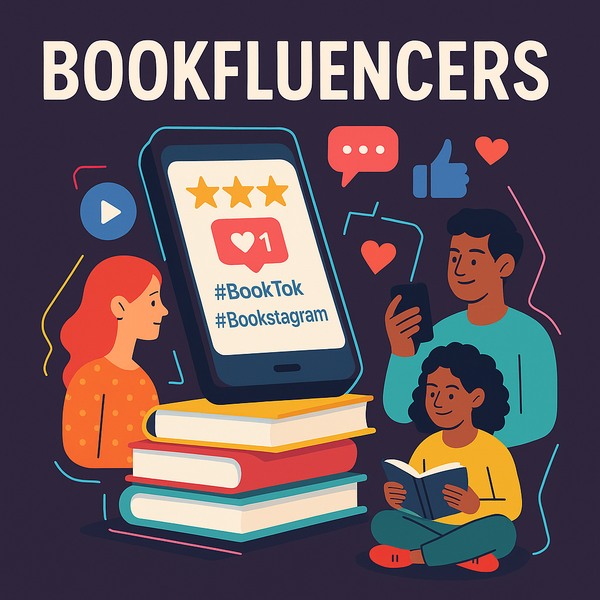Beyond Amazon: How indie authors are winning big with direct-to-reader sales in 2025

The Changing Landscape: Why authors are looking beyond Amazon
For decades, Amazon has been the go-to for indie authors: massive reach, ease of use, built-in audience, and a sense that it’s the route to legitimacy. Yet in 2025, a growing number of authors are quietly, and powerfully, breaking free of that dependency. They’re selling their books directly to readers, cutting out intermediaries and reclaiming control, profit, and connection.
This isn’t just a trend, it’s a shift. As costs, competition, and algorithm changes make Amazon less certain, indie authors are rediscovering a fundamental truth: relationships with readers can be more powerful than retail dominance.
In this article, we’ll explore how authors are making direct sales work, what’s required, what the risks are, and how you can integrate direct distribution into your strategy and expand your reach.
Why go direct? The advantages of Direct-to-Reader sales
There are compelling reasons authors are embracing direct sales:
- Higher Revenue Per Sale
When you sell directly, you avoid retailer fees, platform commissions, and sometimes distributor cuts. That means your net royalty per copy can be significantly higher. Even if you sell fewer copies direct, the margin difference often makes it worthwhile.
- Stronger Reader Relationships
Direct sales allow you to know exactly who bought your book—email addresses, names, sometimes notes. That direct line lets you nurture loyalty, ask for reviews, and build anticipation for your next release.
- Flexibility & Control
You control your pricing, bundles, discount windows, edition types, and even bonus content. You can experiment with book bundles, limited editions, or early-access digital versions without platform restrictions.
- Brand Building & Discovery
Direct-to-reader sales often come via your own website or newsletter, which builds your author brand. Over time, that brand becomes a key asset—your audience may follow you even if platforms change.
- Resilience Against Platform Risk
When your entire income depends on one platform like Amazon, any algorithm shift or policy change can be devastating. By diversifying into direct sales, you reduce that vulnerability.
How authors are doing it in 2025: Real examples
Let’s look at authors who are already making direct sales work and the lessons we can draw.
Example: Joanna Penn & The Creative Director Model
Joanna Penn, bestselling non-fiction author and podcast host, is often cited as a pioneer of diversified publishing. While she still sells through platforms like Amazon, her income model includes direct sales for courses, bundles, and special editions. In interviews, she’s called that “the creative director model”—you create your work but control key assets.
In her words: “My books are my backbone, but direct offers are where I connect with readers and deliver high value. I don’t see direct vs. platforms as a war—I see them as complementary tools.”
Because Joanna has built an audience first (through podcast, site, newsletter), she now offers signed editions, bundles, and early-access versions direct all at higher margins than retail.
Example: Fantasy Author with Collector’s Boxes
A fantasy author I know launched a direct-only “Collector’s Box” edition of her novel: a hardcover edition, custom bookmarks, art prints, and early chapters of book two. She sold 500 boxes at a premium price, collecting the full margin (minus shipping and packaging). The surprise? Fans who bought the box later also left Amazon reviews, boosting the book’s ranking in retail markets.
This example shows that direct doesn’t cannibalize platform sales: it can enhance visibility by creating buzz and reviews.
Key components you need to execute direct sales
Selling direct is powerful, but it’s not magic. You need infrastructure, strategy, and consistency. Here’s what you must set up:
1. A Author Website or Storefront
Your website becomes your central hub. It should include:
- A polished storefront or shop page (e.g., via Shopify, WooCommerce, Gumroad, or integrated tools).
- Secure payment processing (Stripe, PayPal, etc.).
- Proper pricing, inventory (if physical), and delivery tools (for digital books or bundles).
- A reader-friendly user experience.
Authors who treat their site like a mini bookstore see much better conversion.
2. A Robust Email List
Your email subscribers are your most valuable audience. These are people who want to hear from you, and direct sales often convert highest from your own list.
Offer free content (short stories, sample chapters, author insights) in exchange for emails. Nurture with newsletters that go beyond “buy my book”—share behind-the-scenes, writing challenges, progress updates, and occasional offers.
One memoir writer I interviewed once said, “My newsletter feels like writing letters to friends. And when I drop a direct-only offer, my readers buy it because they know my heart.”
3. Fulfillment & Logistics
For physical books or merchandise, you must handle shipping, packaging, and returns. Many authors use print-on-demand or third-party fulfillment services to reduce overhead. For digital products, use automated delivery systems that send download links after purchase.
Shipping delays or errors can damage trust. So if you commit to direct, systemize your fulfillment processes.
4. Marketing & Promotion Strategy
Direct sales don’t happen magically, they require promotion:
- Tease upcoming editions or launches in your newsletter before you go live.
- Use social media to create awareness around bundles or limited editions.
- Run occasional sales or flash offers just for your subscribers.
- Use content marketing (blog posts, podcasts, videos) to attract new audience members.
In 2025, authors often combine organic and paid tactics: a small ad campaign promoting a bundle on your site, or boosting a post linking to your direct offer.
Risks, challenges & mitigation
No path is without obstacles. Let’s be realistic about what direct sales demands—and how to address the challenges.
Risk: Lower Volume Compared to Major Retailers
Expect that direct sales will initially be a fraction of what you might sell via retailer channels. But because your margin is higher, you may still make more per copy.
Mitigation: Don’t abandon platforms like Amazon; continue to use them in tandem. Think of direct sales as complement, not replacement.
Risk: Upfront Costs & Time
Setting up a store, payment systems, packaging, and marketing takes time and money.
Mitigation: Start small—offer digital books or simple bundles first. As revenue grows, reinvest in physical products or premium editions.
Risk: Logistics & Customer Support
If you mismanage orders, slow responses, or shipping errors, you risk negative reviews and damaged reputation.
Mitigation: Be transparent about delivery estimates. Use fulfillment services when needed. Set expectations clearly with buyers.
Risk: Visibility & Traffic
Without Amazon backing, you’ll need to build or send your own traffic to your site.
Mitigation: Invest in content, SEO, collaborations, cross-promotion with other authors, and paid ads (small, targeted ones) to drive traffic to your direct offers.
Direct Sales + Retail = Hybrid Strategy
One of the strongest models in 2025 is hybrid: combining direct-to-reader sales with traditional retailer listings. You get the best of both worlds, the reach of platforms and the margins of direct.
Many authors adopt this approach:
- Retail versions handle mass market.
- Exclusive or premium editions and bundles live only on your site.
- Retail drives discovery, while direct gives you agility, loyalty, and higher margins.
You don’t have to abandon Amazon; you can use it strategically.
Steps to transition toward direct sales (In Order)
Here’s a roadmap authors often follow when moving into direct:
- Build or improve your author website—set up a shop page.
- Grow your email list—offer exclusive content.
- Start with digital offers—direct eBooks, PDFs, short stories, or bundles.
- Test simple physical bundles—e.g. paperback + ebook combination.
- Promote directly—via newsletter, social media teasers, etc.
- Analyze performance—track conversion rates, traffic, bestseller lift.
- Expand offerings—premium editions, merch, signed copies.
- Refine & scale—automate logistics, repeatedly test offers, explore new formats (audio, foreign, serialized).
By pacing your rollout, you can test, learn, and grow without burning out.
Measuring Success: metrics that matter
To know if your direct sales efforts are working, focus on:
- Conversion Rate: How many site visitors become buyers.
- Average Order Value (AOV): Bundles increase your AOV.
- Repeat Purchases: Are readers buying again?
- Email Engagement: Open rates, click-through rates, and response to offers.
- Retail Spillover: Did direct sales lead to better visibility, more reviews, or retail lift?
These metrics tell the story behind the dollar amounts.
The human touch: why stories still win
In a world of algorithms and AI, what wins is heart. Direct-to-reader success often comes from vulnerability, storytelling, and connection.
Recently, romance author Sarah Monroe shared: “I included a personal letter to each reader in my signed edition. Several buyers emailed me telling me they cried reading it. That kind of connection is worth more than volume.”
When you sell direct, you’re not just selling a book—you’re inviting readers into your world. Each email, thank-you note, or handwritten postscript builds loyalty in ways that Amazon reviews can’t replicate alone.
Final Thoughts
The path beyond Amazon is not rejection, it’s expansion. Direct-to-reader sales don’t need to replace retail channels. Rather, they act as a companion strategy that empowers you, enriches your connection to readers, and gives you breathing room in an ever-evolving publishing landscape.
In 2025, authors who win are those who build direct relationships, control their offers, diversify income, and remain nimble. If you dream of launching direct, start small, iterate boldly, and lean into authenticity.
If you want help setting up your direct storefront, planning bundle launches, or strategizing how to integrate direct with retail, PubliWrite is here to support you. We empower indie authors with tools, community, and guidance so that you can win on your own terms, not someone else’s.
Your book exists because of your voice. Let your relationships with readers reflect that truth.





